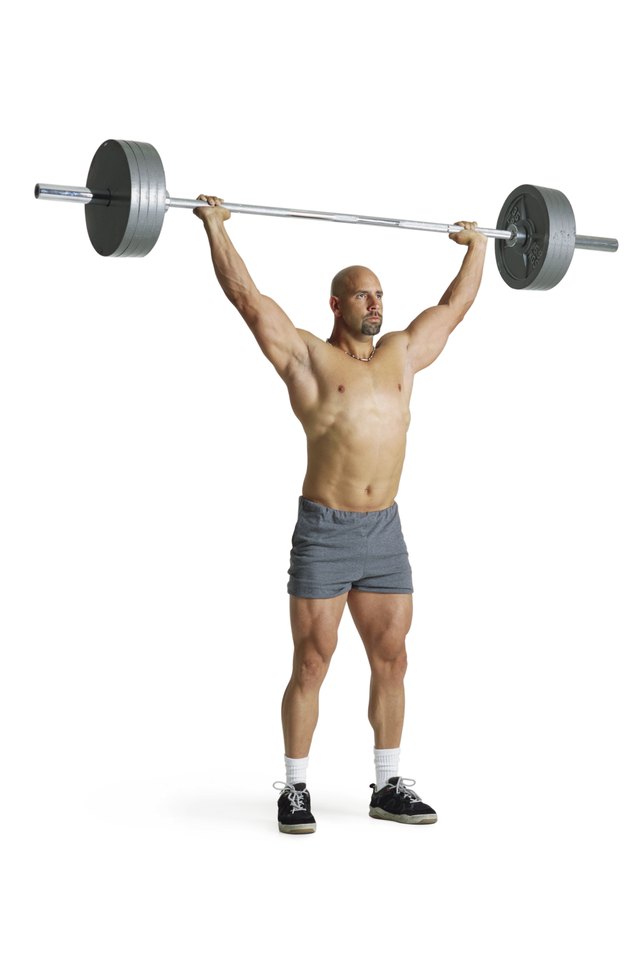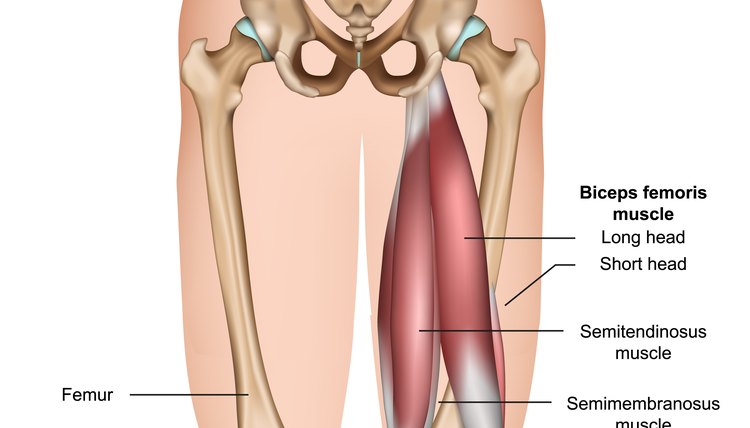The Muscles Used During a Snatch Exercise (with Video)

The snatch is a power lifting exercise that requires you to quickly and forcefully pull a barbell from the floor to over the head all in one movement. It's an explosive exercise that gets your heart rate up and works several muscle groups throughout your upper and lower body. It being a full body exercise makes it a mainstay in the crossfit community and is even considered an Olympic event. Here’s all the muscles worked during this weightlifting event.
How to do a snatch?
Before we go into where the snatch exercise is building muscle, it’s important for beginners to know how to snatch with proper form. Whether it's the power snatch, muscle snatch, kettlebell snatch, dumbbell snatch, hang snatch, or any other snatch variation; your snatch technique should remain mostly the same. Start this Olympic lift by getting into the starting position. Get into a deadlift position with the bar at or below your shins. Your hips should be at your knees and your knees should be over the barbell. Grab the bar with a wide snatch grip, one that is wider than hip width or shoulder width. This will look like a hook grip or overhand grip.
Push hard off the floor and move into a stand up position. As the barbell moves up, extend your lower body until your heels are off the ground. Once this happens, catch the bar above your head and transition into an overhead squat position. From the overhead position, stabilize yourself and stand up.
Gluteus Maximus
The gluteus maximus is the largest of the three gluteal muscles and is the primary mover of hip extension. The glutes work during the initial pull of the bar off the floor and again during the final step of the exercise as you extend your hips to stand to the fully erect position. The glutes along with the lower back muscles help to stabilize a lifter’s body during the full snatch.
Hamstrings

Photodisc/Photodisc/Getty Images
The hamstrings are a group of muscles on the back of the thigh that consist of the semimembranosus, semitendinosus and biceps femoris. These muscles work together to stabilize and flex the knees and aid hip extension. During a snatch, the hamstrings are used to flex your knees as you squat down to the bar, and slightly used to re-flex the knees during the "scoop" phase and again during the "catch" phase. The hamstrings also work constantly throughout the exercise to stabilize your knee joints. Finally, these muscles work together with the gluteus maximus to extend the hips during the initial pull and the final stand.
Quadriceps
The quadriceps muscles are worked intensely during the snatch to extend and stabilize the knees. The vastus lateralis, vastus intermedius, vastus medialis and rectus femoris make up the quads and are used during the initial pull, the catch and the final standing movement of the snatch exercise to extend the knees.
Calves

Photodisc/Photodisc/Getty Images
The gastrocnemius and soleus muscles of the calves are used to plantar flex the foot. This movement occurs during the second pull of the snatch when you forcefully jump upward and lift your heels off the floor.
Trapezius and Deltoids
The trapezius and deltoids are the primary upper body muscles used during a snatch. These muscles are used during the initial pull of the snatch to stabilize the shoulders and shoulder blades. The trapezius is used again during the second pull phase to shrug the shoulders upward. The deltoids and trapezius work together to pull your body under the bar and then to catch and stabilize the bar overhead.
References
Writer Bio
Blaise is a Freshman at the University of Missouri, studying Journalism at the world-renowned J school. He is the host of the Fast Five Podcast with his Childhood friend Sam Sinclair and interns with the Sports AI platform Pine Sports. He is a huge fan of the Kansas City Chiefs and the St Louis. Cardinals and hopes to cover them professionally in his near future.
